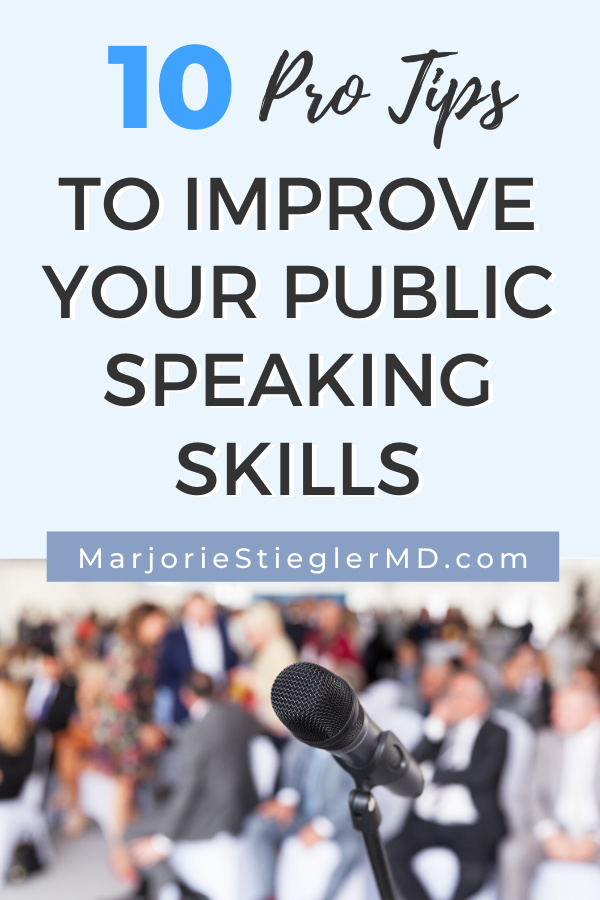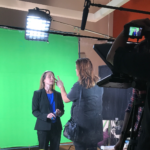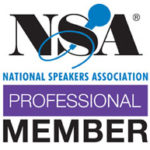Want To Enhance Your Public Speaking Skills? 10 Tips You Need For Success (Episode 4)
Many people have anxiety when it comes to their public speaking skills, even people who are very seasoned. There’s really no reason to have nerves around your speaking engagements as long as you prep accordingly.
As a physician, a social media strategist and a paid professional public speaker, I have some valuable public speaking skills to share that many people neglect to pay attention to. Without using these simple tips you can really ruin your presentation, but also cause yourself a lot of undue stress.
Your best outcome to deliver a smooth presentation is to focus on is your message, however, to get your words and storytelling right there are a handful of things you can find out in advance.
In This Episode of The Career Rx You’ll Learn:
- To ask the right questions when planning for your public speaking event
- How you can strategically plan out the best ways to interact with your audience
- How to deliver a quality on stage experience
- Feel more confident about your public speaking skills
LISTEN TO THIS EPISODE:
SUBSCRIBE TO THE CAREER RX PODCAST:
Want to get access to the latest podcast? Subscribe on your preferred podcast player…
Apple Podcast | Google Podcast | Spotify | TuneIn + Alexa | iHeart Radio
–
TRANSCRIPT AND SHOW NOTES
Hey there! Welcome to The Career Prescription (aka The Career Rx). I’m your host Marjorie Stiegler.
Today I’m sharing 10 public speaking tips you can use to take your speaking engagements to the next level and really present like a pro.
10 Tips To Dramatically Improve Your Public Speaking Skills

Want to enhance your public speaking skills? Here are 10 pro tips you need for success. #publicspeaking #thecareerrx Share on X
1. Know The Sound System
What kind of microphone are you going to be using?
This is really important as if it’s a fixed Mike out of the podium, then you’re going to be stuck behind that podium. That that already limits you.
You won’t be able to turn your head really one way or the other without losing the directionality of the mic.
Also, you’re going to be stuck on one side of your audience and it’s going to be harder to engage the other side.
If you’re going to have a lavalier mic, especially if you’re a woman, make sure that if you have a dress, you’ve got to have a belt or a jacket or so you have someplace that the battery pack can go.
And again, keep in mind if it’s on one side, then when you turn your head that way, you’ll no longer have the same quality. It won’t be consistent.
If you can, I recommend using a headset. You can talk and go wherever you want. This gives you freedom of movement and freedom of speech.
Just make sure you know which of these mics you’re getting, that way you can be prepared and avoid unwanted stress.
2. Know How Your Presentation Slides Will Advance
Improving your public speaking skills also means being prepared with your presentation slides. You will, therefore, need to find out from the venue how your slides are going to be advanced.
Do you have the use of a clicker?
Or do you have to stand next to the laptop and click, click, click to the next slide? (This will limit your ability to interact with your audience).
The worst scenario is having to get someone else to move the slides forward. Do what you can to avoid this, but if this is the case, you can at least make a plan in advance.
3. Test The Functionality of Your Slides
- Will you need an internet connection?
- Do your slides have animation, video or audio clips?
Make sure to test this functionality at the venue before your speaking engagement, so you know that everything works.
Public Speaking Skills Tip: I recommend having backup presentation slides that do not require animations, builds, live streaming, anything like that. This way if something doesn’t work you have a backup plan to avoid major problems.
4. Ask About the Lighting at the Venue
What about the lighting of the venue?
A lot of people don’t even ask about this. You’ve got to ask! So depending upon whether the lights will be up or down, whether there are windows or not will determine whether your slides are easy for the audience to read.
You want to know these details as it’s easy to change the presentation template before you get there. It’s a lot harder when you’re there and you realize that nobody can see what you’re presenting.
Another consideration for lighting is whether you want the lights to come up or down if you are playing a short video. This is good to let the venue know in advance.
Even if you have to give a cue, it can be orchestrated. Nothing is more disruptive in the middle of a presentation than trying to ask around, “Hey, does anyone know how the lights work?”
So, find out what kind of lighting is going to be there.
5. Ditch The Laser Pointer
If there’s one thing to throw away when it comes to lighting is a laser pointer. Never, never, never use a laser pointer! This may seem simple but it’s critical to have strong public speaking skills.
There’s a couple of reasons for this, but the primary one is you have this laser in your hand which you are likely to fiddle with.
Also, no matter how cool and confident you are, when your hand is extended, your arms extended and you’re pointing over towards some nebulous area on your slide, there’s a tremor there.
It’s there for everybody. This little dot looks like it’s having a seizure all around the slide and it makes it hard for the audience to watch, but it also makes you look nervous even if you aren’t.
So just forget the laser pointer you can articulate, you can verbalize what it is that you want people to do or you can use some kind of animation on the slide.
Related: 4 Unique Ways Speaking Helps Career Advancement
6. Decide How You Plan To Move On Stage
You want to take a good look at the stage and define the ideal zones.
So again, assuming you can move, if you’re not going to have a fixed microphone behind a podium or you’re not going to be videotaped or recorded, you have the freedom to move.
You want to figure out where the safe zones are on the stage.
- You want to be sure that you are not stepping out of the lighting or even worse partially out of the lighting so that there’s like a shadow across your face or your body.
- You want to be sure that you’re not standing between the projector and the screen because then of course, the slides are partially on you. You may be partially blinded, your audience can’t see some portion of the slides.
This can also truly ruin photos. If you’re trying to get good videotape of yourself presenting or you’re trying to get good professional photographs of yourself on stage, make sure you are in the space where the stage lighting is.
Map it out on the stage and just know where your zones are. Don’t go forward and don’t go back. Know exactly where you want to be.
This only takes a few minutes and can make a big difference for your public speaking success.
7. Never Turn Your Back on The Audience
Nothing breaks the connection with your audience more than when you turn your back to look at your slides.
You’ve got your slides as a reference so you may want to glance at the slides from time to time. But this means you are not talking to your audience.
You do not have to do this. There are a lot of techniques you can learn where you can communicate what’s on the slides behind you.
Find out if you’re going to have a confidence monitor or not or whether you can use presenter view.
Regardless of whether you can see what’s coming up on the next slide, you need to rehearse so you can speak to the content without turning around.
8. Quality Slides Only
Ever been at a presentation where the speaker puts up a slide and then they say, I know the slide is too busy and you can’t read it or it’s too small.
Don’t put that slide up!
You’ve been in the audience and you know you’ve hated when others do this, but please do not put that slide up.
There is no reason that you need to display that data that is so small that others can’t see. If there is data you want to communicate just write that number on the slide and then tell the story about the data.
You don’t need to use the too busy, too ugly, too small figure.
9. Customize Your Content for Each Venue
When you’re going on the road and you’re speaking a lot, you’re using material that you’ve used before, right?
Not everything is completely brand new, but each venue is new.
Each audience is new and you’ll have a different event planner who hires you to do something unique and tailored to their audience.
So make sure you do a couple of basic things:
- Refresh your cover slide to reflect the venue, date, and anything else customized
- Timing: Even if you are repurposing content you’ve been using on a regular basis, make sure that you know how long you have in this venue and that the amount of content you intend to cover fits in that timeframe. If you’re not sure, and especially if you have interactive portions, make sure you have two natural ending points so if you get up to your time, you can end early.
- If you have plenty of time, you can go longer. It’s always better to end early and then engage in questions and answers than it is to run out of time.
10. Finish with a Power Ending
The final public speaking tip is for you to finish strong.
Hook the audience. Get their attention. Get their interest and have them view you as a credible source of information.
You want your audience to enjoy watching you and this also goes for the end of your presentation.
Make sure that you’re ending with a tangible ROI to your audience so they can go forth, deploy what they have learned and do something better.
Don’t just end on a data slide and say “…that’s all I have. Does anyone have any questions?”
The important thing to remember about being on stage is it’s not about you, it’s about the audience.
Someone has hired you to give something to the audience so that they can go forth and do something differently, think about something differently, have a new skill set or go out and conquer the world in a brand new, better way.
The audience has invested their money and time in watching you for however long you’ve been delivering your content and they are the hero of this story.
It’s not about you.
So, pay as much attention to the ending of your speaking engagement so you can leave the audience with a positive lasting impression. This is your opportunity to connect with this audience which in turn will help move your business forward.
Related: The Speaking Prescription Course – Enroll Now
Developing Professional Public Speak Skills: Conclusion
Using these 10 public speaking tips to really elevate your game.
You are already an expert with your content. If you know what you want to say you’ll come across in a much more professional, polished way.
This, of course, is going to help you in your career, help you to earn more money as a professional speaker and connect you with your ideal audience.
So, go forth and conquer that stage!
–
Thanks for joining me on this episode of The Career Rx.
Please be sure to subscribe and leave me a review on Apple Podcast, Google Podcast or whatever podcast player you’re using to listen today. Also, be sure to send me your questions so that I can answer them and give you a shout out on a future episode.
Bye for now,
Marjorie
Related Public Speaking Articles & Resources:
- Professional Speaking: How To Set Your Price
- Not Getting Speaking Invitations? You Might Be Wrong About Why.
- 20 Essential Questions About Speaking Engagements
- 10 Tips for Physician Speakers To Deliver Better Presentations








